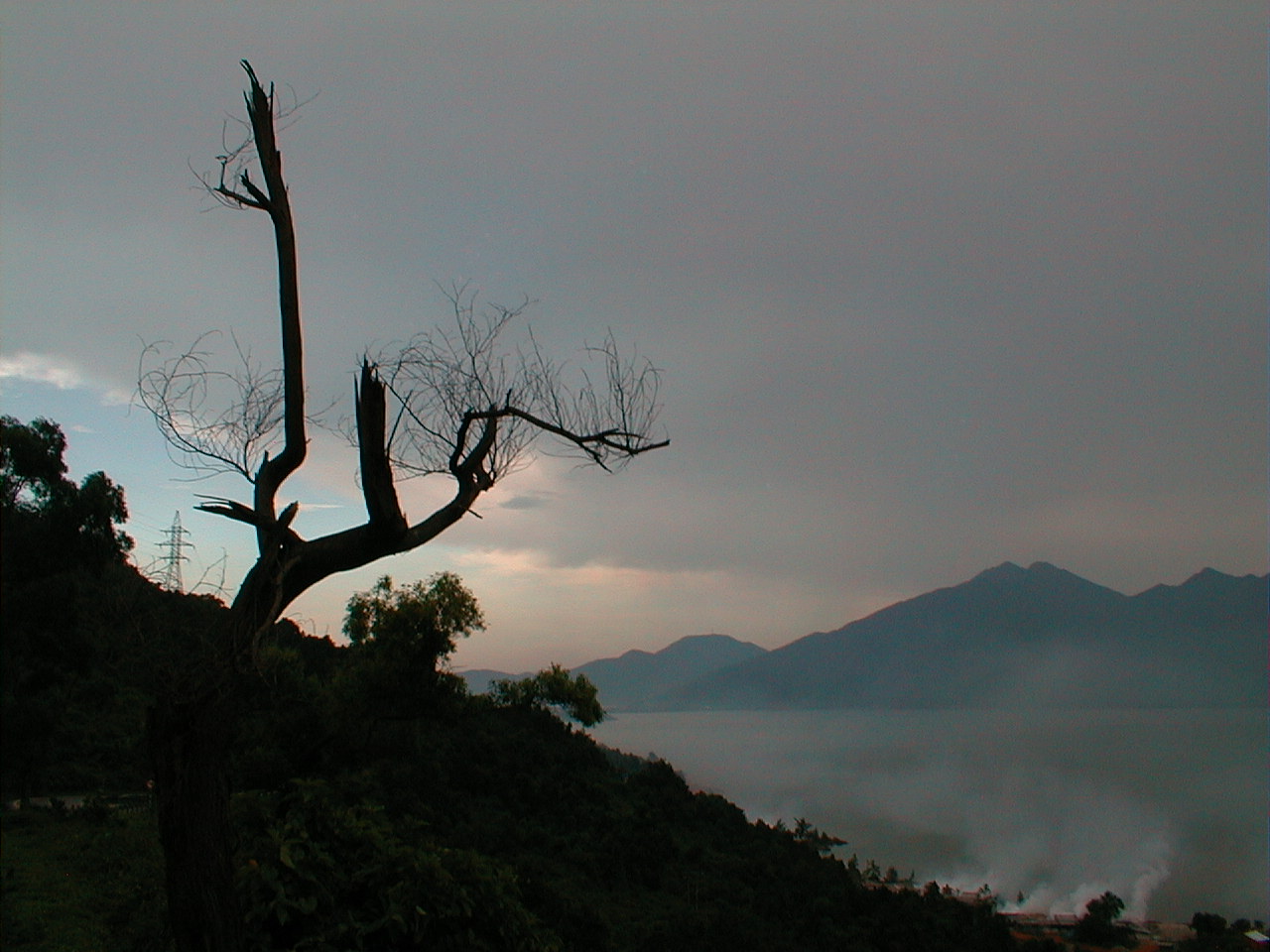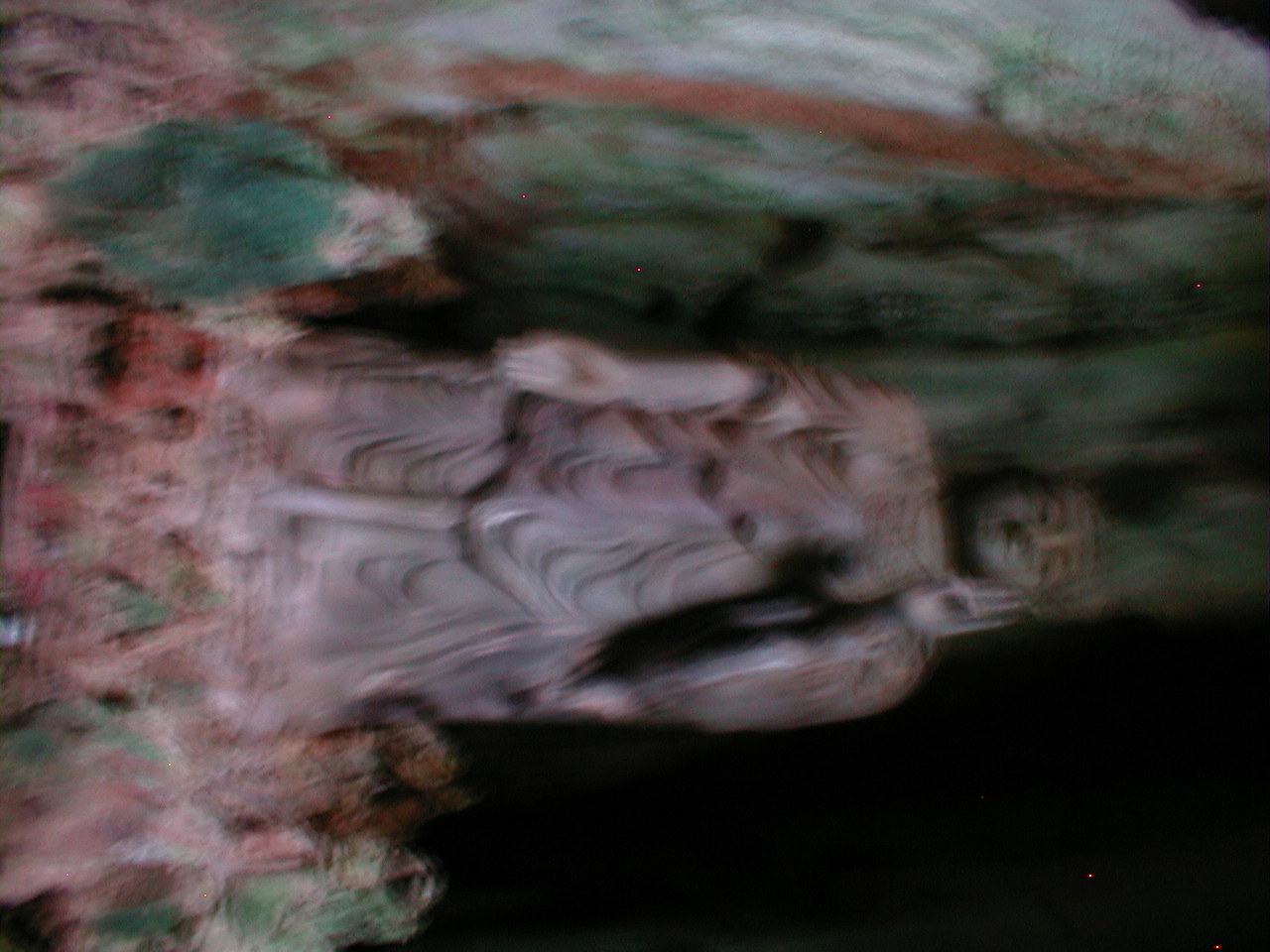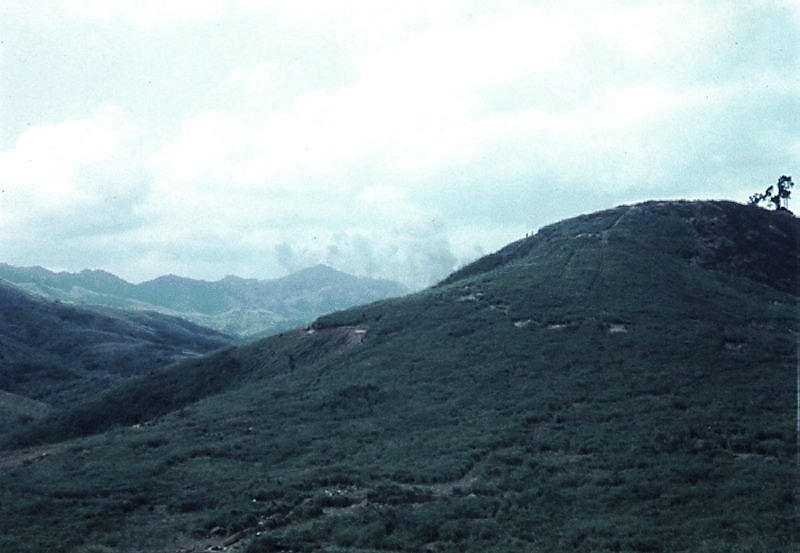| “Life at Khe Sanh had been difficult. Often there was insufficient rations. It was impossible to keep clean, and most of our gear had been destroyed by incoming. Hundreds died. I left Vietnam shortly after leaving Khe Sanh, certain that my unit and the others that had experienced the siege would be in for easier times. This was not the case. VIRTUALY EVERYONE I spoke with ran into greater difficulties after departing Khe Sanh. One former corpsman, recently retired from the Navy, told me over breakfast of his experiences at a place named LZ MARGO. After two days of battle only two men in his platoon of 58 remained unscathed. A entire squadron of medium helicopters was required to evacuate the casualties.” | |
| The Khe Sanh Veterans Reunion by Peter Brush In July, 1993, the Khe Sanh Veterans Association held a reunion in Washington, DC, to commemorate the 25th anniversary of the 1968 battle at Khe Sanh. I had never been to a veterans reunion before. Over the years I had become more curious, not less, about Khe Sanh. In January, 1993, I had the opportunity to return to Vietnam, and to the site of the combat base. Now came my chance to get together with the people who served there. That chance was too much to pass up. About 300 Khe Sanh veterans from all the military services, plus their supporting personnel, overran the Holiday Inn in Georgetown in an operation that commenced on 30 June 1993. The reunion chairman, Ken Penn, did an outstanding job, thanks in no small manner to the large-caliber backup of Bernice Penn. Bernice manifested the organizational manner (as well as the voice) of a regimental sergeant major. Ken had served in Mortar Battery, 1st Battalion, 13th Marines, my old unit, and I found it disquieting that I could not remember him, could not place him at Khe Sanh. This confusion ended when I heard someone refer to Ken as “Lieutenant Penn.” Ah! Light bulb! The Lieutenant! I think it was that fine handlebar mustache that threw me. Ken turned out to be the baby-faced fire direction officer who looked like a college freshman vaguely lost on campus, always searching for the respect second lieutenants found so elusive. I never thought of him as “Ken” and wanted to call him “Lieutenant” throughout the reunion in the interest of continuity.The Marine Corps was heavily involved in the Khe Sanh Veterans’ reunion, and their support was impressive. On 1 July the Marine Corps provided buses and drivers to take our group to the Marine Corps Combat Development Command located at Quantico, Virginia.We spent most of the morning touring a series of museums containing exhibits depicting Marine Corps air-ground operations from 1900 to the end of the Korean War. The collections were all first-class and professionally arranged. The only disturbing thing about the Marine Corps museums at Quantico is that there is nothing devoted to the Vietnam War. The official reason is lack of building space. It is hard to believe that in its multi-billion dollar budgets the Marine Corps cannot manage to provide another dilapidated steel building to illustrate its participation in Vietnam, the longest and biggest war in Marine Corps history.After the museums we toured the facilities of the Marine Corps Association, publishers of quasi-official Marine Corps magazines such as Leatherneck (which all recruits “volunteer” to receive while in boot camp) and Marine Corps Gazette, the professional journal of Marine Corps officers. The Association maintains a excellent book store of military titles ranging from Clausewitz to the Gulf War. The Khe Sanh vets were treated to a fine lunch in the Officer’s Club, hosted by a brigadier general. The general gave a very emotional speech, informing us how grateful the Marine Corps was for our sacrifices at Khe Sanh. The general’s version of our sacrifices included the relating of such events as searching through the dump for uneaten c-rations to ward off hunger and sucking the morning dew off sandbags when water in its more conventional form was unavailable. Once back on the busses one vet announced that there would be a special unit reunion for all the Marines that were involved in this sandbag dew-sucking. I don’t know how many showed up. In the afternoon we were allowed to visit Quantico town, a small Virginia ville on the outskirts of the base. Here was a fine opportunity to replace the military clothing we had outgrown since our enlistments expired. After visiting Quantico town’s uniform clothing stores, which seems to be all Quantico has in lieu of fleshpots and bars, we were bussed to The Basics School, where all Marine officers receive their final infantry training. A lecture on training goals was followed by an exhibition of weapons that are organic to today’s Marine infantry battalions. Most of the weapons I recognized. One exception was a slick Belgian-made light machine gun to replace the BAR. The M-79 grenade launcher was gone (known as a “blooper” in Vietnam) but this loss was more than compensated for by a grenade launcher machine gun that fired the same 40 mm round, but at a firing rate of several hundred rounds per minute. 60 mm and 81 mm mortars were on display, but not the 4.2″ mortars with which my battery had been armed. The only 4.2″ mortar I saw at Quantico had been relegated to the Korean War era museum. The active duty young Marines at Quantico seemed to view the Khe Sanh vets as museum pieces as well. On the third day of the reunion the Khe Sanh vets traveled by bus to the Arlington National Cemetery. There, in a warm and steady rain, children of Khe Sanh veterans participated in a wreath laying ceremony at the Khe Sanh Veterans Memorial. Indicative of the official support was the presence of Marine General Carl E. Munday, Jr., Commandant of the Marine Corps, as the featured speaker. In the evening the rain further dampened the plans of the Khe Sanh vets. On the schedule was the Marine Corps Evening Parade, held at Marine Barracks, 8th & I Streets, in Washington, DC. This is the oldest post in the Corps, occupied since 1801 on a site approved by President Thomas Jefferson. After sitting on Marine Corps buses for over an hour, the Marine Corps decided to take a chance on the weather and proceed with the parade. Although it had rained most of the day the clouds disappeared as we arrived at the Marine Barracks. A First Sergeant magnificently attired in dress blues assured us that the weather would cooperate for the duration of the program. Within minutes the moon was visible. The Evening Parade is an extremely impressive ceremony. The Khe Sanh vets, as guests of honor, were given reserved seating. First up was a concert by the Marine Corps Band, “The President’s Own.” Second was the appearance of the Marine Corps Drum and Bugle Corps. Near the end, with the sun fully set and the parade ground illuminated by floodlight, was the Silent Drill Platoon Rifle Inspection. These men are truly dazzling, and do things with fixed-bayoneted M-1s that I would have not thought possible. At the end of the ceremony the grounds were plunged into darkness. Breaking the stillness of the moment, a lone Marine appeared bathed in spotlight on the roof of the barracks. The magical notes of “Taps” lent solemnity and dignity to the end of the ceremony. It was impossible not to be proud of being an ex-Marine. On the evening of July 3 there was a banquet at the hotel. The invocation and benediction were given by Ray Stubbe, who was the base chaplain at the combat base during the siege, as well as coauthor of the best history of the battle at Khe Sanh. The special presentation guest speaker was Nguyen Tuong Anh, Regional Director of the Vietnamese Nationalist Peoples Party. Anh thanked the Khe Sanh vets for their sacrifices. Anh ended his talk with the presentation to the veterans of his party’s flag; red stripes on a yellow field (a la the Republic of Vietnam Service medal which we were all entitled to wear). Following the banquet was a memorial service at the Vietnam Veterans Memorial at the Mall. This was the first visit to the Wall for many of the Khe Sanh vets. And given their history, they were certain to find many familiar names. No vet walks away from the Wall unaffected. Some Khe Sanh vets began to trickle home on the 4th of July. Most stayed. No formal activities were scheduled by the reunion committee but there is always plenty to do in Washington in the summer. In the evening 450,000 people were at the Mall for a spectacular fireworks display above the Washington monument. This was the best fireworks display I have ever seen. But a vet standing next to me was overwhelmed by it, especially when numerous rockets would go off at the simultaneously. Fireworks don’t particularly remind me of Vietnam, but this vet was forced to turn away, ears plugged, eyes closed tightly, and fear evident on the face that pressed into my shoulder. A good number of the vets I met were involved with police work. The best t-shirt read: HOMICIDE Chicago Police “Our Day Begins When Yours Ends” One of the most satisfying things about this reunion for me was my ability to appreciate the stories I heard. Often when I talk with vets the places and events are foreign to me. But not at the Khe Sanh vets reunion. Most in attendance were Marines and most had spent their tours of duty in I Corps in the late 1960s. If I hadn’t been to the places they described at least I had read about them, and could find them on a map. Life at Khe Sanh had been difficult. Often there was insufficient rations. It was impossible to keep clean, and most of our gear had been destroyed by incoming. Hundreds died. I left Vietnam shortly after leaving Khe Sanh, certain that my unit and the others that had experienced the siege would be in for easier times. This was not the case. Virtually everyone I spoke with ran into greater difficulties after departing Khe Sanh. One former corpsman, recently retired from the Navy, told me over breakfast of his experiences at a place named LZ Margo. After two days of battle only two men in his platoon of 58 remained unscathed. A entire squadron of medium helicopters was required to evacuate the casualties. One individual I knew well in Vietnam receives a 100% disability for PTSD–something I never heard of before. When his unit got overrun by VC sappers on the Cao Doi peninsula, killing nine Marines and wounding 18, this Marine, a clerk, wound up beating an enemy soldier in the face with his rifle butt. But the M-16 is not as robust as the M-14 we used for hand-to-hand combat training, and it was necessary to use a bayonet to finish off the VC sapper. The VC threw a satchel charge into one bunker, killing all the inhabitants except one. The bodies were badly burned and had to be identified by dental records. The lone survivor was at the reunion. Some of the best times at the reunion were at the hotel bar. I met a music teacher from upstate New York and a South African journalist who were completely mystified by this strange collection of people. Neither had even heard of Khe Sanh before wandering into the bar. Several vets brought slides from Khe Sanh and projected them onto the wall. It was interesting for me to hear them argue about what these slides were depicting. They couldn’t agree on much, each sure of his own authority because, you see, each had been at Khe Sanh. “What do you mean, that isn’t Hill 861! Right there is where John got hit!” “Hill 861 is where I got hit! That’s not a picture of Hill 861, goddamn it! I ought to know Hill 861 when I see it! I lived there for months.” And on and on. I never visited any of the hill positions during the siege. We felt that at some point the NVA would attempt to overrun the base, and that the hill positions would be attacked first. Life on these hilltops seemed to be particularly bleak. They were more exposed to enemy fire and clearly at the end of the supply line. I expressed these sentiments to a Marine who spent the siege on Hill 881 South, explaining how badly I felt that they had to spend the siege there. “We felt badly for you guys on the base!” he replied with a huge smile. “We could hear the rockets and artillery pass overhead on its way to your position, and see every round impact into the base. We were glad to be in the hills!” One vet from the 3d Recon Battalion told me of sending home a M-79 grenade launcher, a M-14 capable of firing fully automatic, plus several fragmentation grenades in a sea bag. His mother followed instructions and did not open the bag when it arrived home. The thrill of possessing such firepower diminished over the years, and he eventually threw the fragmentation grenades into Great South Bay off Long Island, inadvertently killing a sea turtle. The M-79 rounds were placed in concrete when he built an addition onto his house. I jokingly suggested he might want to sell the M-14 to a drug dealer. He mentioned that he had been offered four ounces of cocaine for the rifle. We discussed my acquiring the M-79 grenade launcher but nothing came of it. This vet also related a story whereby he acquired a knapsack from a dead NVA soldier. The pack contained some clothing items, letters from home, some photographs, two balls of rice and a quantity of marijuana. My experience with marijuana in Vietnam was that it was very strong stuff. My battalion alone fired tens of thousands of artillery rounds into the NVA positions and the air strikes were continuous. It must have been quite a sensation to be caught in a napalm strike while stoned on industrial-strength marijuana. Especially with nothing to munch on except rice balls. Many of the anecdotes involved Marines helping each other. One infantryman told me of being medevaced after being sprayed with shrapnel. He was terrified of riding in a helicopter and quickly became cold as the chopper gained altitude. Recognizing his fear and discomfort, the door gunner covered the injured Marine with his coat and stuck a lit cigarette in his mouth. Maybe it is the memory of such little things that made these people want to get together again. Men are notorious for their inability to show affection, especially to men. I don’t know why that doesn’t seem to be the case in war. In terms of camaraderie, these men lost none in the twenty-five years since leaving Khe Sanh. Former battalion commanders huddled and talked with former privates. Best of friends who had not seen each other since their Vietnam days spent hours together in the bar, bringing each other up to date. Men who still had physical problems from their war experience were helped by men who went home unscathed. The sense of “family” was overwhelming, and very satisfying. At Khe Sanh we mostly lived in bunkers and trenches. I had no occasion to meet people from other units. The Marines occupying the hill positions I never even saw. On the combat base we were forbidden to be above ground unless we had a need. Whatever we did at Khe Sanh in 1968 we mostly did in isolation from one another. I am grateful for the opportunity to meet these people. At breakfast one vet greeted a friend from his unit, “Hey, dude, how you doing?” The reply was, “I’m doing just fine. I haven’t slept this good in years.” +++
This text, made available by the Sixties Project, is copyright © 1996 by Viet Nam Generation, Inc., or the author, all rights reserved. This text may be used, printed, and archived in accordance with the Fair Use provisions of U.S. Copyright law. This text may not be archived, printed, or redistributed in any form for a fee, without the consent of the copyright holder. This notice must accompany any redistribution of the text. The Sixties Project, sponsored by Viet Nam Generation Inc. and the Institute of Advanced Technology in the Humanities at the University of Virginia at Charlottesville, is a collective of humanities scholars working together on the Internet to use electronic resources to provide routes of collaboration and make available primary and secondary sources for researchers, students, teachers, writers and librarians interested in the 1960s.
|
|
.

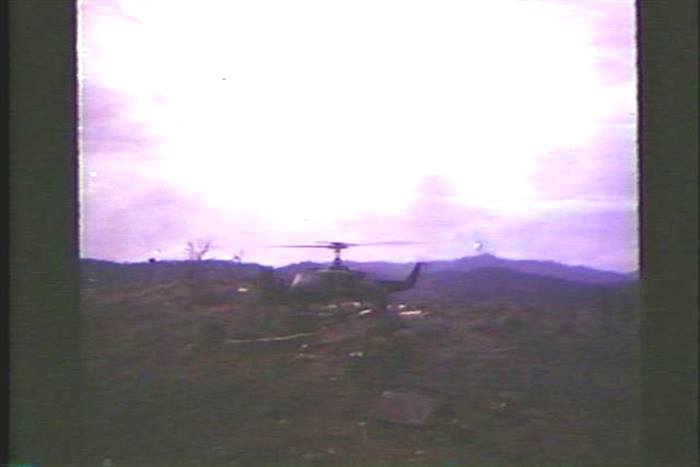
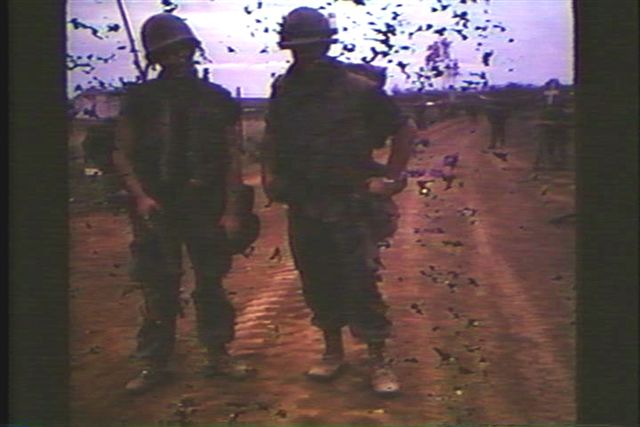

.jpg)
.jpg)

